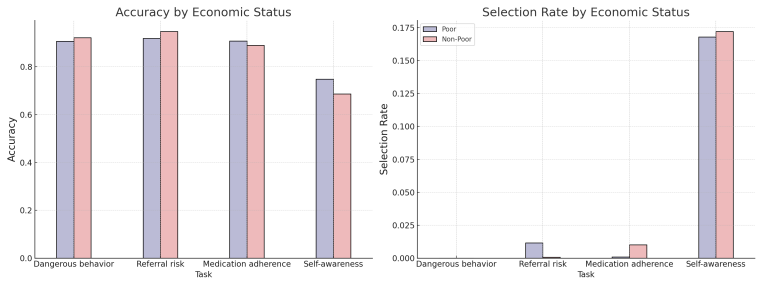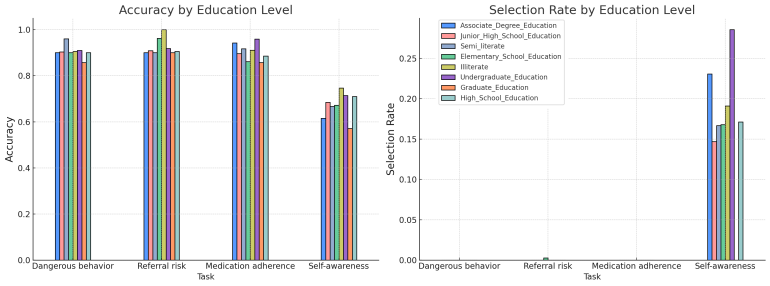Academic Express | Deep Learning in Mental Health: Exploring Innovative Applications of Artificial Intelligence in Mental Health Rehabilitation
Recently, a team led by Professor Zhao Liu from the School of Design at Shanghai Jiao Tong University, in collaboration with the team led by Professors Jun Cai and Weibo Zhang from the Shanghai Jiao Tong University Affiliated Mental Health Center, achieved significant progress in the field of mental disorders. Their related research results, titled "Employing Graph Attention Networks to Decode Psycho-Metabolic Interactions in Schizophrenia" and "Enhancing Psychiatric Rehabilitation Outcomes Through a Multimodal Multitask Learning Model Based on BERT and TabNet: An Approach for Personalized Treatment and Improved Decision-Making," were published in the Q1 JCR psychiatry journal, Psychiatry Research (IF=11.3, SSCI/SCI).

The research was based on basic information, diagnoses, and physical examination data from over 6,000 patients with severe mental illness (SMI) from four districts in Shanghai. Combined with follow-up data from April 2020 to April 2021, deep learning techniques were employed to evaluate rehabilitation outcomes and to explore the correlations between "psychiatric symptoms" and "metabolic health" among patients with schizophrenia in the dataset.
Research 1
The research built a multimodal multitask rehabilitation status assessment model based on the BERT and TabNet architectures to enhance predictions across four dimensions of rehabilitation status for patients with severe mental illness: referral risk, dangerous behavior, insight, and medication adherence. BERT was used to process follow-up records and other textual data, while TabNet handled structured diagnostic information and physical examination data. The model demonstrated excellent predictive performance outcomes across all four tasks, surpassing the effectiveness of unimodal and single-task models. Additionally, a series of robustness, fairness, and interpretability tests and analyses were conducted, demonstrating the model's potential application in rehabilitative care.

Model Building and Research Process

Results of the Economic Status Fairness Test

Results of the Gender Fairness Test

Results of the Educational Level Fairness Test

Results of the Medical Expense Source Fairness Test"

Comparing the Importance of Features in Multiple Clinical Decision Tasks

Feature Importance Analysis
This research successfully designed and implemented a deep learning-based multimodal multitask model specifically for assessing the rehabilitation status of SMI patients. The model shows great potential in the field of mental health rehabilitation, providing a comprehensive and detailed evaluation method for patients' rehabilitation status. However, despite the data-driven insights provided by AI-based decision support systems, they cannot fully replace the empathy, intuition, and emotional intelligence that clinicians exhibit during therapeutic interactions. These human qualities are crucial for building therapeutic alliances, understanding patients' personal experiences, and tailoring treatment plans.
Research 2
The complex and underexplored interactions between psychiatric symptoms and metabolic health in schizophrenia patients are highly intricate. To delve deeper into these interactions, this study constructed a bipartite graph network of psychiatric symptoms and metabolic health, using a Graph Attention Network (GAT) architecture to perform link prediction tasks. The goal was to reveal nonlinear and complex interaction patterns between the data that traditional statistical analyses cannot capture. The results indicated that weight management (BMI) and medication management play central roles in the interactions between mental illness and metabolic health. Additionally, there is a significant association between the history of psychiatric symptoms and physical health indicators, which had not been sufficiently emphasized in previous studies. The findings further underscore the importance of the biopsychosocial model, particularly highlighting the roles of medication treatment, personal history (such as previous psychological trauma), metabolic indicators (such as BMI, and szBp), and biomarkers (such as TG, HDLC, and LDLC) in the interaction process between psychiatric symptoms and metabolic health.

A bipartite graph network of the interaction between mental symptoms and metabolic health.



Using the GNN Explainer interpretability analysis method to examine the important feature associations between mental symptoms and metabolic health.
This study emphasizes the need for a comprehensive treatment and rehabilitation approach for patients with schizophrenia, taking into account not only their physical and psychological states but also their attitudes and adherence to treatment. Our findings highlight the importance of the biopsychosocial model, particularly the correlations between medication treatment patterns, personal history factors (e.g., past psychological trauma and schizophrenia symptoms), and metabolic indicators (such as BMI, szBp) and biomarkers (such as TG, HDLC, and LDLC).
The two papers were supported by the following fundings:
The Shanghai Jiao Tong University 2024 "Medical-Engineering Interdisciplinary Research Fund" Key Project (YG2024ZD24);
The Shanghai Public Health System Strengthening Three-Year Action Plan Discipline Leader Project (GWVI-11.2-XD25);
The Shanghai Jiao Tong University Liberal Arts Young Talents Cultivation Program (2023QN038);
The Shanghai Jiao Tong University School of Medicine Science and Technology Innovation Project (WK2118);
The Shanghai "New Star of Medical Research" Young Medical Talent Training Program (Shanghai Health Personnel [2021] No. 99);
The Shanghai Natural Science Foundation Soft Science Project "Digital Rehabilitation Modeling for Schizophrenia Patients" (Project No.: 23692114900).